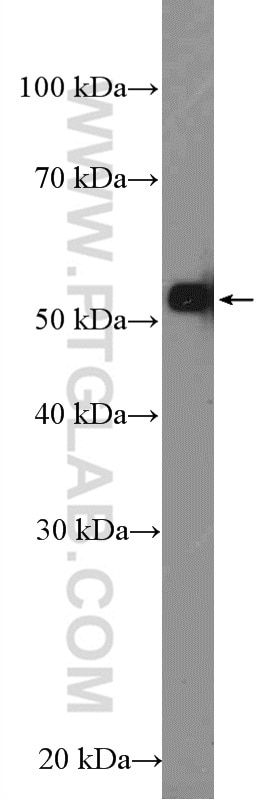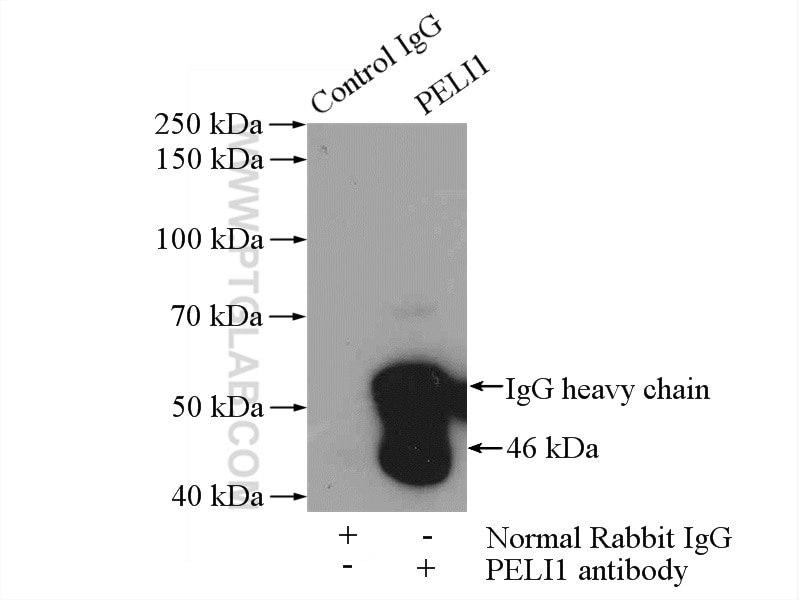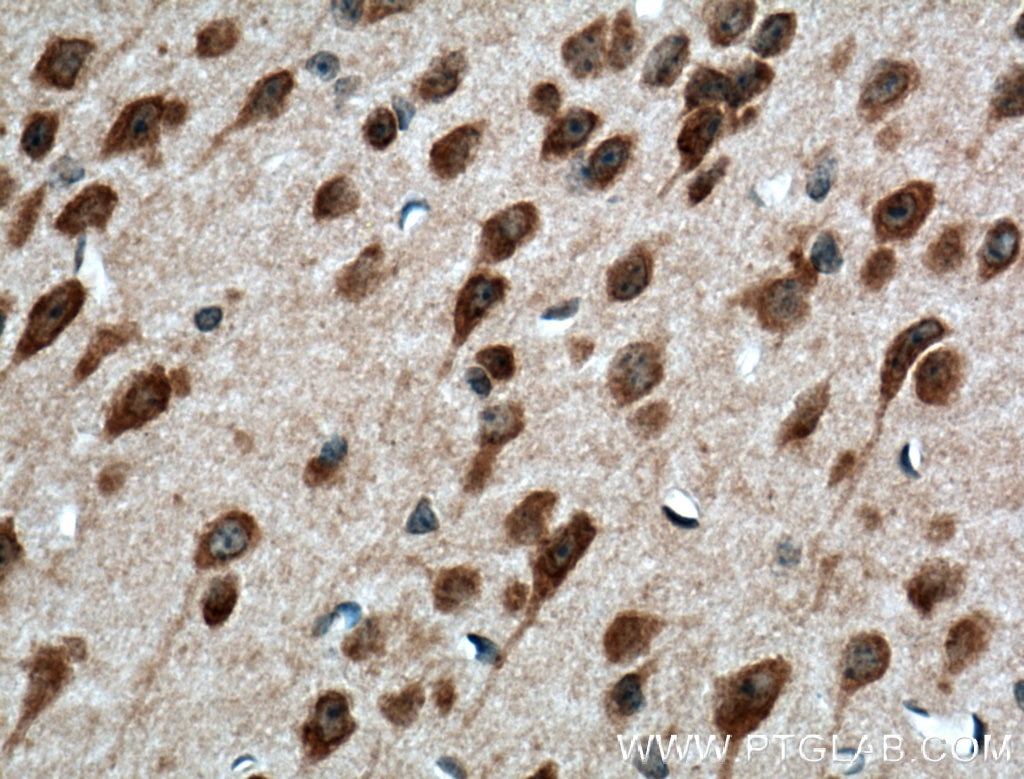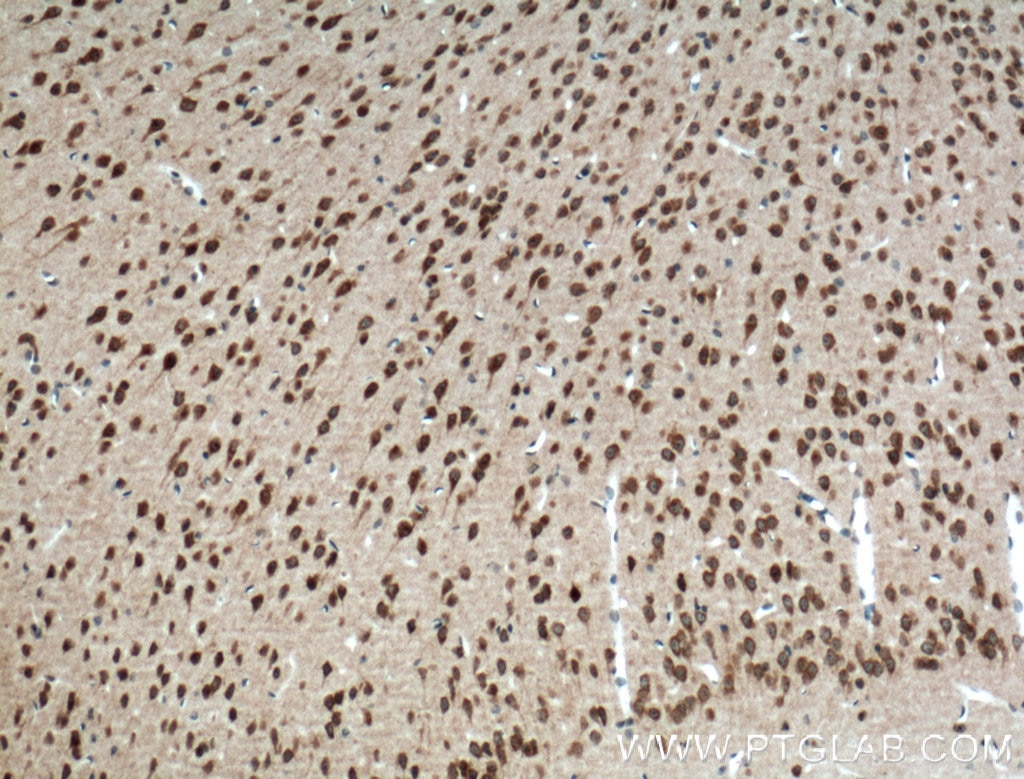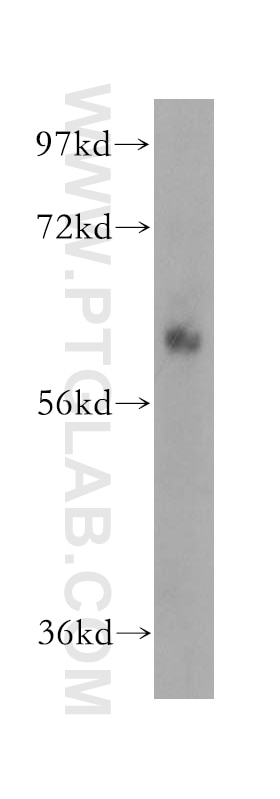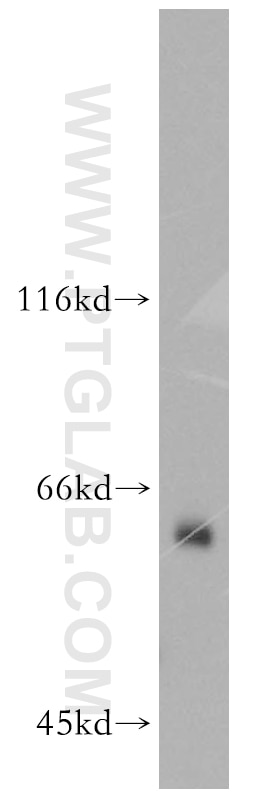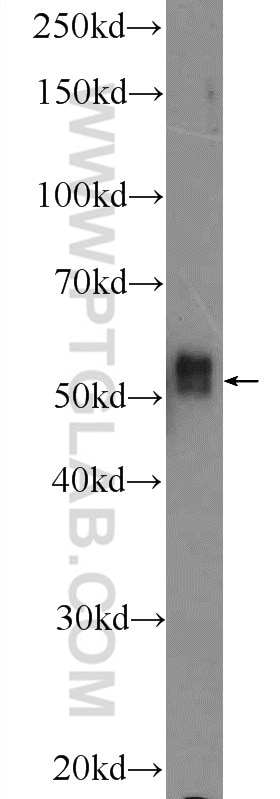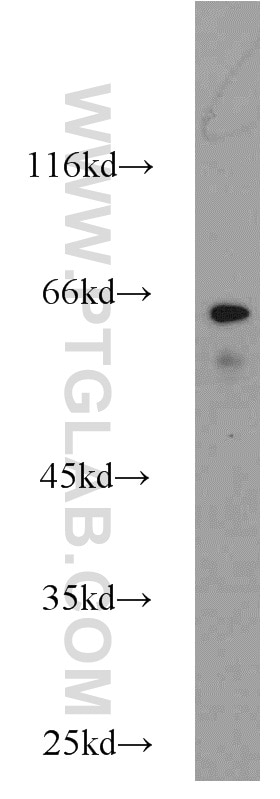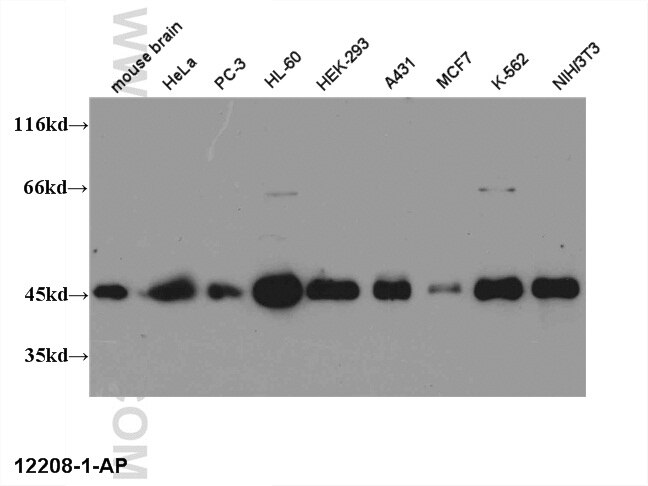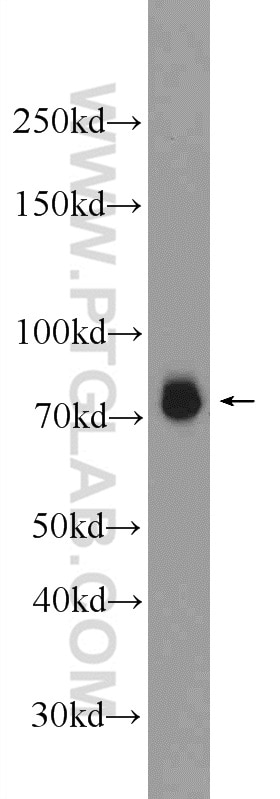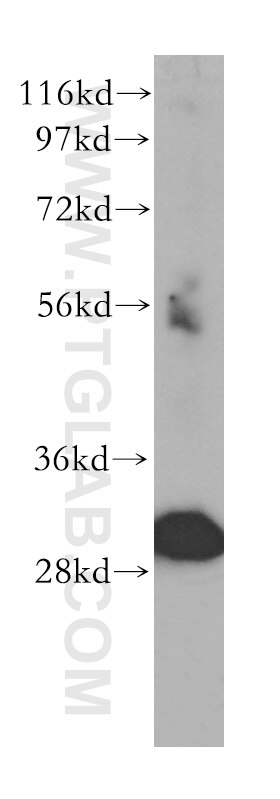- Phare
- Validé par KD/KO
Anticorps Polyclonal de lapin anti-PELI1
PELI1 Polyclonal Antibody for WB, IP, IHC, ELISA
Hôte / Isotype
Lapin / IgG
Réactivité testée
Humain, rat, souris
Applications
WB, IP, IHC, ELISA
Conjugaison
Non conjugué
N° de cat : 12053-1-AP
Synonymes
Galerie de données de validation
Applications testées
| Résultats positifs en WB | cellules THP-1, |
| Résultats positifs en IP | cellules SH-SY5Y |
| Résultats positifs en IHC | tissu cérébral de souris, il est suggéré de démasquer l'antigène avec un tampon de TE buffer pH 9.0; (*) À défaut, 'le démasquage de l'antigène peut être 'effectué avec un tampon citrate pH 6,0. |
Dilution recommandée
| Application | Dilution |
|---|---|
| Western Blot (WB) | WB : 1:500-1:1000 |
| Immunoprécipitation (IP) | IP : 0.5-4.0 ug for 1.0-3.0 mg of total protein lysate |
| Immunohistochimie (IHC) | IHC : 1:50-1:500 |
| It is recommended that this reagent should be titrated in each testing system to obtain optimal results. | |
| Sample-dependent, check data in validation data gallery | |
Applications publiées
| KD/KO | See 1 publications below |
| WB | See 4 publications below |
| IHC | See 1 publications below |
Informations sur le produit
12053-1-AP cible PELI1 dans les applications de WB, IP, IHC, ELISA et montre une réactivité avec des échantillons Humain, rat, souris
| Réactivité | Humain, rat, souris |
| Réactivité citée | Humain, souris |
| Hôte / Isotype | Lapin / IgG |
| Clonalité | Polyclonal |
| Type | Anticorps |
| Immunogène | PELI1 Protéine recombinante Ag2683 |
| Nom complet | pellino homolog 1 (Drosophila) |
| Masse moléculaire calculée | 418 aa, 46 kDa |
| Poids moléculaire observé | 46-53 kDa |
| Numéro d’acquisition GenBank | BC011419 |
| Symbole du gène | PELI1 |
| Identification du gène (NCBI) | 57162 |
| Conjugaison | Non conjugué |
| Forme | Liquide |
| Méthode de purification | Purification par affinité contre l'antigène |
| Tampon de stockage | PBS avec azoture de sodium à 0,02 % et glycérol à 50 % pH 7,3 |
| Conditions de stockage | Stocker à -20°C. Stable pendant un an après l'expédition. L'aliquotage n'est pas nécessaire pour le stockage à -20oC Les 20ul contiennent 0,1% de BSA. |
Informations générales
PELI1 encodes pellino-1, an E3 ubiquitin-protein ligase pellino homolog. E3 ubiquitin ligase functions by catalyzing the covalent attachment of ubiquitin moieties onto substrate proteins. Pellino-1 is involved in the TLR and IL-1 signaling pathways via interaction with the complex containing IRAK kinases and TRAF6. Pellino-1 can mediate 'Lys-63'-linked polyubiquitination of IRAK1 allowing subsequent NF-kappa-B activation thus playing a role in cellular inflammation. This antibody may cross react with Pellino-3.
Protocole
| Product Specific Protocols | |
|---|---|
| WB protocol for PELI1 antibody 12053-1-AP | Download protocol |
| IHC protocol for PELI1 antibody 12053-1-AP | Download protocol |
| IP protocol for PELI1 antibody 12053-1-AP | Download protocol |
| Standard Protocols | |
|---|---|
| Click here to view our Standard Protocols |
Publications
| Species | Application | Title |
|---|---|---|
PLoS Biol Peli1 impairs microglial Aβ phagocytosis through promoting C/EBPβ degradation.
| ||
J Transl Med MiR-30c-5p loss-induced PELI1 accumulation regulates cell proliferation and migration via activating PI3K/AKT pathway in papillary thyroid carcinoma. | ||
Autoimmunity MiR-153-3p induces immune dysregulation by inhibiting PELI1 expression in umbilical cord-derived mesenchymal stem cells in patients with systemic lupus erythematosus. | ||
Lab Invest Regulatory T Cells Overexpressing Peli1 Show Better Efficacy in Repairing Ovarian Endocrine Function in Autoimmune Premature Ovarian Insufficiency | ||
Cell Signal PELI1 overexpression contributes to pancreatic cancer progression through upregulating ubiquitination-mediated INPP5J degradation |
